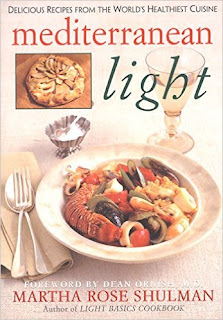I have several faux finishing books I’ve accumulated over
the years (I used to do a good bit of faux and fancy paint finishes), and this
is the best one I’ve found. His great strength in this book is various types of
fake stone: marble, semiprecious stone, limestone and sandstone. He devotes a
lot of space and step by step photographs to stone. A lot of it is fairly
advanced, but there is also some easy ones like lapis lazuli. There is one
magnificent faux inlaid panel he shows us; a vase of flowers of inlaid
semiprecious stones. The finishes most people would start with, especially on
large walls, like patinas and distressing, are in there, as well as the high
complex art of trompe l’Oeil- painting fancy moldings on walls and doors. Finkelstein
is the first author I have seen actually demonstrate *how* to draw the moldings
and paint them, complete with shadows and highlights. Other books show a couple
of them to you and “And then a miracle occurs!” they don’t bother to tell you
how to do them. Trompe l’Oeil is the one faux that always defeated me. Now I
almost feel like I could do it, and I happen to have a couple of flat doors
that need painting…
<iframe style="width:120px;height:240px;" marginwidth="0" marginheight="0" scrolling="no" frameborder="0" src="//ws-na.amazon-adsystem.com/widgets/q?ServiceVersion=20070822&OneJS=1&Operation=GetAdHtml&MarketPlace=US&source=ac&ref=tf_til&ad_type=product_link&tracking_id=mancatman-20&marketplace=amazon®ion=US&placement=0823008584&asins=0823008584&linkId=7933cd27781ec9a04feae976b3fd66cf&show_border=false&link_opens_in_new_window=false&price_color=333333&title_color=0066c0&bg_color=ffffff">
</iframe>
</iframe>
The above is an affiliate link. If you click through and buy something- anything- from Amazon, they will give me a few cents. This in no way influenced my review.







